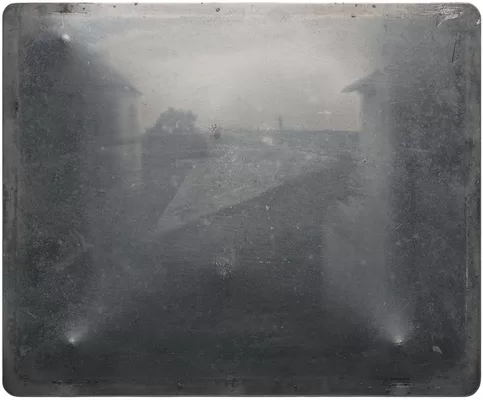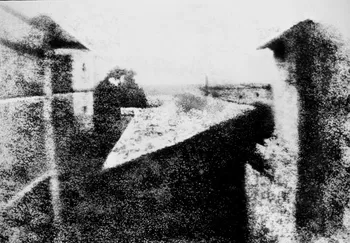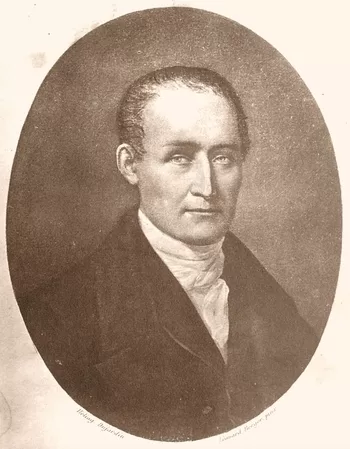The Musée Maison Nicéphore Niépce is more than just a museum; it’s a celebration of the ingenuity and perseverance of Nicéphore Niépce, whose work forever changed the way we capture and perceive the world. The Musée Maison Nicéphore Niépce is where photography was invented.
Whether you’re a photography enthusiast, a history aficionado, or simply someone looking for an enriching cultural experience, a visit to this museum offers a profound connection to the origins of photography and the man who made it all possible.
This charming museum is located in the quaint town of Saint-Loup-de-Varennes, France, in the house where Nicéphore Niépce, the inventor of photography, lived and worked, making it a pilgrimage site for photography enthusiasts and history buffs alike.
Our story on Musée Maison Nicéphore Niépce continues after this advertisement:
A Brief History of Nicéphore Niépce
Nicéphore Niépce, born on March 7, 1765, was a French inventor known for capturing the world’s first photograph. His pioneering work laid the foundation for modern photography, and his contributions to science and art continue to be celebrated worldwide.
Niépce’s most famous work, “View from the Window at Le Gras,” taken in 1826, is recognized as the oldest surviving photograph of a real-world scene.
The Museum Experience
The Musée Maison Nicéphore Niépce offers visitors a unique opportunity to step back in time and explore the birthplace of photography. The museum is housed in Niépce’s family home, providing an intimate look at his life and work.
As you walk through the rooms where Niépce once lived, you’ll find a collection of artifacts, documents, and photographs that chronicle his journey and the evolution of photography.
Early Photographic Techniques
One of the most captivating aspects of the museum is its detailed presentation of the various techniques Niépce experimented with, including heliography, the process he used to create the world’s first photograph.
Detailed explanations and replicas of his equipment provide a fascinating insight into the challenges he faced and the innovations he pioneered.

Original Photographs and Reproductions
Visitors to the museum can view some of Niépce’s original works and high-quality reproductions, including the iconic “View from the Window at Le Gras.”
These exhibits highlight the painstaking process of early photography and the remarkable clarity achieved with limited technology. Seeing these images up close offers a profound appreciation for Niépce’s ingenuity and perseverance.
Niépce’s Laboratory
A highlight of the museum is a meticulously recreated version of Niépce’s laboratory. This exhibit offers a glimpse into the inventor’s workspace, complete with period-appropriate tools and materials.
t’s easy to imagine Niépce toiling away in this room, experimenting with light and chemicals to capture his groundbreaking images. The authenticity of the laboratory setting brings his story to life, allowing visitors to step into the shoes of a true pioneer.
Interactive Displays
For those interested in a hands-on experience, the museum features interactive displays that allow visitors to try their hand at early photographic techniques.
These activities provide a deeper understanding of the processes Niépce developed and the advancements that followed. Engaging with these displays offers a tangible connection to the history of photography and the innovative spirit of its earliest practitioners.
Educational Programs and Workshops
The Musée Maison Nicéphore Niépce is not just a museum but also an educational center. It offers a variety of workshops and programs for all ages, from school groups to photography enthusiasts.
These sessions cover topics such as the history of photography, traditional photographic techniques, and modern digital photography. Expert-led tours and lectures provide additional insights into Niépce’s life and the broader impact of his work on the world of photography.
Visiting Information
The museum is located in Saint-Loup-de-Varennes, a short drive from Chalon-sur-Saône in the Burgundy region of France. The picturesque surroundings add to the charm of this historical site.
The museum is open year-round, with varying hours depending on the season. It’s recommended to check their official website or contact the museum directly for the most up-to-date information.
Admission fees are modest, with discounts available for students, seniors, and groups. Special events and workshops may have additional costs.
Nicéphore Niépce: The Pioneer of Photography
Nicéphore Niépce, born Joseph Nicéphore Niépce on March 7, 1765, in Chalon-sur-Saône, France, was a French inventor best known for his groundbreaking work in the field of photography.


His most notable achievement is the creation of the world’s first permanent photograph, marking the beginning of the photographic era.
Early Life and Interests
Niépce was born into a well-to-do family, allowing him the opportunity to pursue various scientific interests from an early age.
He initially embarked on a career in the military, serving in the French army. However, his interests soon shifted towards the sciences and inventions.
Throughout his life, Niépce dabbled in various fields, including engineering and chemistry, always driven by a relentless curiosity and a passion for discovery.
The Road to Photography


Niépce’s journey to inventing photography began with his interest in lithography, a method of printing images using a stone or metal plate.
Finding the process tedious and seeking a way to automate image reproduction, he began experimenting with light-sensitive materials.
His goal was to capture images directly from nature without the need for manual engraving.
Heliography: The First Photographic Process
After years of experimentation, Niépce succeeded in developing a process he called heliography.
This process involved coating a metal or glass plate with a light-sensitive substance, such as bitumen of Judea, a type of asphalt.
The coated plate was then exposed to light, which hardened the bitumen in proportion to the exposure, creating a latent image.
In 1826 or 1827, Niépce used this technique to create the world’s first known photograph, “View from the Window at Le Gras.”
The photograph was taken from an upstairs window of his estate in Saint-Loup-de-Varennes, capturing a view of the courtyard and surrounding buildings. The exposure time for this image was incredibly long, lasting about eight hours, resulting in a rather rudimentary but historic image.
Collaboration with Daguerre
Recognizing the potential of his invention but also its limitations, Niépce sought to improve the process further. In 1829, he entered into a partnership with Louis Daguerre, a fellow inventor and artist.
Although Niépce passed away in 1833, their collaboration set the stage for Daguerre to continue refining the photographic process, eventually leading to the development of the daguerreotype in 1839, which became the first commercially successful photographic process.
Legacy and Impact
Nicéphore Niépce’s contributions to photography are monumental. He laid the groundwork for the development of modern photography, influencing countless inventors and artists who followed.
His pioneering work demonstrated that it was possible to capture and preserve images from life, a concept that has since become integral to human culture and communication.
Niépce’s invention not only transformed art and science but also profoundly impacted society by changing the way we document and perceive the world around us. His legacy lives on in the continued evolution of photographic technology and the enduring importance of photography in our daily lives.
Today, Niépce is celebrated as the “Father of Photography,” and his home in Saint-Loup-de-Varennes has been preserved as the Musée Maison Nicéphore Niépce, a museum dedicated to his life and work. This museum serves as a testament to his ingenuity and his lasting impact on the world of photography.
Related stories
The beginning of photography: heliographs and daguerreotypes
Louis Daguerre and the invention of the daguerreotype
Australia’s first professional photographer George B Goodman
The oldest surviving Daguerreotype in Australia, 1845
The first photograph taken in Australia was by Captain Lucas



